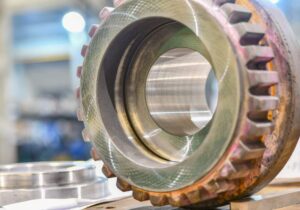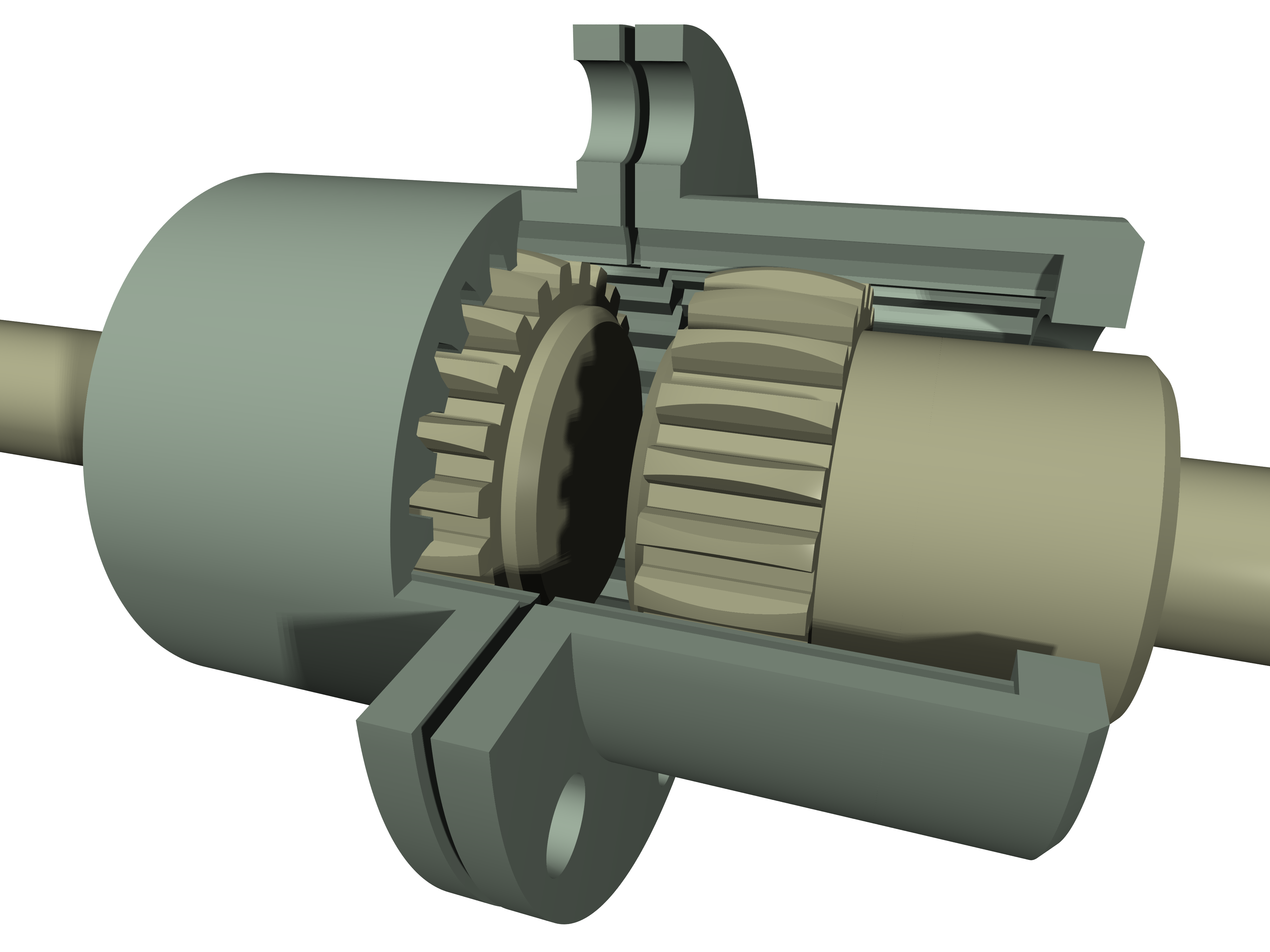How to Choose the Right Gear Coupling
Author Gear Technology India on July 5, 2023
Image source: Petteri Aimonen/ Public Domain/ Wikimedia Commons
Here’s the low-down on the various types of couplings and its pros, cons and challenges they pose
By: Nishant Kashyap
Choosing the right gear coupling is crucial in various industries where efficient power transmission and misalignment compensation are essential. This article will guide you through the types of gear couplings available, their advantages, disadvantages, and the challenges associated with selecting the appropriate coupling for your specific application.
Gear couplings are a type of flexible coupling that transmits torque between two shafts through intermeshing gears. They are commonly used in applications that require high torque transmission and accommodate moderate levels of shaft misalignment. There are several types of gear couplings each with its own design and features. The main types of gear couplings are:
- Flanged Sleeve Gear Coupling: This is the most basic and common type of gear coupling. It consists of two flanged sleeves with external gear teeth that mesh together. The flanges are bolted to the shaft ends that provides a rigid connection while allowing for angular misalignment.
- Continuous Sleeve Gear Coupling: This is similar to the flanged sleeve coupling but comes without flanges. It is identified as two sleeves with internal gear teeth that mesh together. It offers higher torque capacity and accommodates angular misalignment.
- Half Gear-Half Rigid Coupling: In this design, one half of the coupling is a flexible gear coupling, while the other half is a rigid coupling. This offers a combination of flexibility and rigidity, allowing for misalignment compensation while maintaining a high torque capacity.

- Floating Shaft Gear Coupling: This type of gear coupling consists of two flanged sleeves with external gear teeth. The flanged sleeves are connected by a floating shaft, which allows for axial movement and compensates for axial misalignment.
- Spacer Gear Coupling: Spacer gear couplings use a spacer to connect two gear hubs. The spacer separates the gears allowing for angular and axial misalignment compensation. It is commonly used in applications where shaft separation is required such as in the case of a gear drive.
- Gear Grid Coupling: Although technically not a gear coupling, the gear grid coupling is worth mentioning. It combines gear and flexible grid elements to provide high torque capacity and excellent misalignment compensation. It is widely used in heavy-duty applications.
These are some of the commonly used types of gear couplings. The selection of the appropriate gear coupling depends on factors such as torque requirements, misalignment compensation needed, space limitations, and the specific application’s operating conditions.
Key Factors to Select the Right Gear Coupling for Specific Applications
Selecting the right gear coupling for a specific application involves considering various factors to ensure optimal performance and reliability. Here are the key steps to guide you in selecting the appropriate gear coupling:
Determine Application Requirements
- Identify the torque requirements: Calculate or estimate the maximum torque that the coupling needs to transmit in your application. This information will help determine the appropriate size and torque capacity of the gear coupling.
- Assess misalignment: Determine the expected levels of angular, parallel, and axial misalignment in your system. Consider factors such as thermal expansion, vibration, and installation tolerances that may affect misalignment. This will help determine the required misalignment compensation capability of the gear coupling.
Consider Operational Conditions
- Operating Speed: Evaluate the rotational speed of the system as excessive speeds can affect the performance and durability of the gear coupling. Ensure that the selected gear coupling is rated for the required operating speed range.
- Environmental Factors: Take into account the environmental conditions in which the gear coupling will operate like temperature extremes, humidity, dust, or corrosive substances. Choose a gear coupling that can withstand the specific environmental challenges.
Assess Space Limitations
- Evaluate the available space for the gear coupling installation. Consider the dimensions and design of the gear coupling to ensure it fits within the allocated space.
Consult Manufacturer’s Data and Expertise
- Review manufacturer’s catalogs, technical data sheets, and specifications to understand the capabilities, dimensions, and limitations of the gear coupling options available.
- Consult with coupling manufacturers or industry experts to discuss your specific application requirements. They can provide valuable guidance and recommend suitable gear coupling options based on their expertise and experience.
Cost Considerations
- Evaluate the budgetary constraints of your project. Consider the initial cost, maintenance requirements, and expected lifespan of the gear coupling. Balancing cost and performance is crucial in selecting the right gear coupling.
Installation and Maintenance
- Consider ease of installation and maintenance requirements associated with the gear coupling. Ensure that the coupling can be easily installed and maintained within your system.
By carefully considering these factors and consulting with experts, you can make an informed decision when selecting the right gear coupling for your specific application. Remember to prioritize factors such as torque capacity, misalignment compensation, operational conditions, space limitations, and cost to ensure optimal performance and longevity of the gear coupling in your system.
Advantages and Disadvantages of Gear Coupling
Gear couplings offer several advantages and disadvantages, which are important to consider when choosing them for a specific application.
Advantages
- High Torque Transmission: Gear couplings are capable of transmitting high torque loads making them suitable for applications that require heavy-duty power transmission.
- Misalignment Compensation: Gear couplings can accommodate moderate levels of angular, parallel, and axial misalignment between the connected shafts. They provide flexibility to compensate for minor shaft misalignments, and reduces the stress on the connected components.
- Compact Design: Gear couplings have a compact design which allows them to be used in applications with limited space availability. Their small footprint makes them ideal for installations where space is a constraint.
- Durability and Longevity: Gear couplings are designed to withstand high loads, shocks, and vibrations, ensuring their durability and longevity. They are commonly used in demanding applications where reliability is crucial.
- High-Speed Capability: Gear couplings can handle high rotational speeds without compromising their performance, making them suitable for applications that require high-speed operation.
Disadvantages
- Maintenance Requirements: Gear couplings require periodic maintenance to ensure their proper functioning. Lubrication of the gear teeth and regular inspection are necessary to prevent wear, damage, or failure.
- Limited Misalignment Compensation: Although gear couplings can accommodate moderate misalignment, they have limitations compared to other flexible couplings like elastomeric or grid couplings. Excessive misalignment beyond their design limits can lead to premature wear and reduced performance.
- Noise and Vibration: Gear couplings, due to the nature of their design, can produce noise and transmit vibrations during operation. In applications where minimizing noise and vibration is critical, additional measures may be required.
- Higher Cost: Gear couplings are generally more expensive than some other types of couplings, particularly when compared to elastomeric couplings. The complexity of their design and manufacturing process contributes to their higher cost.
It is essential to carefully evaluate the specific requirements of an application, including torque, misalignment compensation, speed, space limitations, and budget, to determine whether gear couplings are the most suitable choice. Additionally, regular maintenance and lubrication are crucial to ensure optimal performance and longevity of gear couplings.
Post Views: 1,178

